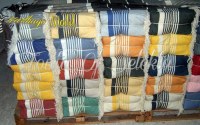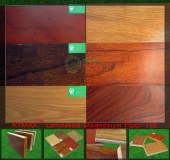Thulium Laser vs. CO2 Fractional Laser for Skin Resurfacing: Advantages for Practitione...
When it comes to skin resurfacing, both the 1927nm thulium laser machine and the CO2 fractional laser machine are popular choices for practitioners and patients alike. However, each of these technologies offers distinct advantages depending on the specific skin concerns, the type of treatment required, and the overall experience for both the practitioner and the patient. Below, we will explore the benefits of each, focusing on how they compare in terms of efficacy, downtime, and treatment precision.
1.Treatment Precision and Depth
Thulium Laser:
The Thulium fiber laser operates at a wavelength of 1927nm, which is ideal for treating more superficial skin concerns such as pigmentation, melasma, and fine lines. Its precision allows it to target the epidermis effectively, offering controlled skin resurfacing with minimal into deeper layers. This laser is excellent for improving skin texture, reducing sun damage, and giving an overall rejuvenated appearance, making it suitable for patients who require lighter treatments or wish to minimise downtime.
CO2 Fractional Laser:
CO2 fractional lasers, on the other hand, work at a wavelength of 10,600 nm, penetrating deeper into the skin compared to the Thulium laser. This makes the CO2 laser more effective for more extensive resurfacing treatments aimed at severe skin concerns like deep wrinkles, acne scars, and significant sun damage. The fractional technology allows the laser to treat only a fraction of the skin at a time, leaving healthy tissue intact, which promotes faster healing while still delivering results on a deeper level.
For the Practitioner:
The Thulium laser provides finer control for addressing more delicate skin conditions without the need to penetrate deeply, making it an excellent choice for patients with superficial skin damage. The CO2 fractional laser offers the flexibility to treat both superficial and deep skin concerns, making it a more versatile tool for comprehensive skin rejuvenation treatments.
For the Patient:
Patients requiring only mild to moderate skin resurfacing may prefer the Thulium laser for its precise treatment of pigmentation and texture issues with minimal downtime. Those with deeper wrinkles and scars may opt for the CO2 laser due to its deeper and more dramatic results.
2.Downtime and Recovery
Thulium Laser:
One of the major advantages of the Thulium laser is the significantly shorter downtime for patients. The treatment causes only mild redness and peeling, which typically resolves within a few days, making it a suitable option for those who wish to return to work or social activities quickly.
CO2 Fractional Laser:
In contrast, the CO2 fractional laser, due to its deeper skin , generally involves more intensive recovery. Patients may experience redness, swelling, and peeling for up to two weeks, with full recovery taking even longer. However, the more aggressive nature of the treatment often delivers more noticeable results in a single session, especially for those with severe skin concerns.
For the Practitioner:
The Thulium laser allows for quicker, simpler treatments with less risk of post-treatment complications, making it ideal for practitioners who want to offer non-invasive treatments with rapid recovery times. The CO2 laser, while requiring more extensive aftercare, is a more powerful tool for achieving significant skin improvements, which can be appealing for patients looking for transformative results.
For the Patient:
Patients who prioritize minimal downtime and faster recovery are more likely to benefit from Thulium laser treatments. In contrast, those who are willing to endure a longer recovery for more dramatic results may choose the CO2 fractional laser.
3.Treatment Comfort and Side Effects
Thulium Laser:
Thulium laser treatments are generally well-tolerated by patients and often require only topical anaesthesia. The treatment process is comfortable due to the laser's precise targeting of the skin's surface. Side effects are typically mild, including light redness and peeling, with a lower risk of hyperpigmentation, especially in darker skin tones.
CO2 Fractional Laser:
CO2 lasers, due to their deeper skin impact, tend to be more uncomfortable during the procedure, often requiring both topical and local anaesthesia. The recovery process can be more painful as well, with increased swelling, redness, and peeling compared to the Thulium laser. However, the CO2 laser's ability to address deep wrinkles and scars makes it worthwhile for patients with more severe concerns.
For the Practitioner:
Thulium lasers allow for a faster, less invasive treatment that is easy to administer and requires less pre-treatment preparation. The CO2 laser offers a more comprehensive solution but demands more precision in administering the treatment, particularly in terms of patient comfort and post-care management.
For the Patient:
Patients often report more comfort and fewer side effects with Thulium laser treatments. However, those seeking deeper skin corrections may be willing to endure the discomfort associated with CO2 treatments for more substantial results.
4.Versatility in Skin Types
Thulium Laser:
The Thulium laser is well-suited for a broad range of skin types, including darker skin tones. It is less likely to cause pigmentation issues, which makes it an attractive option for patients with melasma, sun spots, and other pigmentation disorders.
CO2 Fractional Laser:
While CO2 lasers are effective for treating severe skin concerns, they are more likely to cause complications in patients with darker skin tones, such as post-inflammatory hyperpigmentation. This can make them less versatile unless the practitioner has experience working with a wide variety of skin types.
For the Practitioner:
Thulium lasers provide an excellent option for treating a wide demographic of patients, particularly those with concerns about pigmentation or those with darker skin. The CO2 laser, while highly effective, may require additional training and experience in handling different skin types to avoid complications.
For the Patient:
Patients with darker skin may prefer the Thulium laser for its safer treatment of pigmentation issues, while lighter-skinned individuals may feel more comfortable with the more intensive CO2 laser treatments.
Thulium Laser vs CO2 Fractional Laser Conclusion
Both the Thulium laser and the CO2 fractional laser offer significant benefits for skin resurfacing, but the choice between the two ultimately depends on the patient's specific skin concerns and their tolerance for downtime and discomfort.
For practitioners, the Thulium laser offers an easier, more versatile option for treating superficial skin issues with minimal risk, while the CO2 laser provides a powerful tool for addressing deeper skin concerns. Patients should weigh the pros and cons of each, considering factors like recovery time, desired results, and skin type.
By offering both options, clinics can provide tailored solutions to meet the diverse needs of their clientele.
Contact : Best Bvlaser, 0086 19503862093
Good deal: buying from seller
We invite you to read our terms of use. You can also visit our FAQ section and see our information section on the risks associated with counterfeiting.
|
This page is about importers and exporters of Thulium Laser vs. CO2 Fractional Laser for Skin Resurfacing: Advantages for Practitione... Search in a category : Medical Search in a category : laser, fractional, resurfacing, thulium, practitione, skin, advantages |
Tuesday, December 23, 2025
Quantity : 10000 - Price : 000 eur
- Tunisian Original Beach Fouta - - Fouta of selekta - selekta is a leading manufacturer of the traditional Tunisian fouta bath towel originally used after Hammam baths (better known in the West as Turkish baths). Artfully hand-woven on looms using 100% pure cotton, these extraordinary...
http://www.facebook.com/selektanet
- seleka
- 4027 - Sousse
- +21 6 73 23 29 59
- +21 6 98 20 81 34
Friday, April 15, 2016
Quantity : 100 - Price : 10 000,00 €
Thermal resistance wet resistance tester Testing Standards: GB/T 11048, ISO 11092, ASTM F1868, ASTM D1518, JIS L1096 Sweating Guarded Hotplate Application The Thermal resistance wet resistance tester simulates the heat and mass transfer processes which occur next to human skin...
Qinsun Instruments Co., LTD
- 201615 - shanghai
- 862164200566
- 02164200566
Sunday, November 15, 2015
Quantity : 1000000 - Price : 100,00 €
RYMAX Laminated Magnesium Floor Tile | Waterproof Floor Tile | Fireproof Flooring Because the fireproofing-waterproofing and artificial composite baseplate is compounded by inorganic materials through special process, RYMAX Laminated Magnesium Floor Tile has many advantages including...
Guangzhou Rymax Building Materials Co., Ltd.
- gzrymax
- 510160 - Guangzhou
- +86 20 81811486










